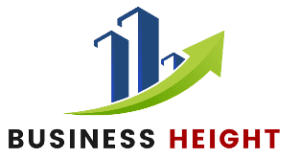Using social media to promote a brand to current and future consumers is known as social media marketing.
Organizations often have teams devoted to managing social media marketing initiatives. These teams evaluate the effectiveness of these campaigns using analytics. Understanding these metrics. How they might benefit your team if you are involved in your firm’s social media or general marketing is beneficial.
This article discusses social media metrics and their benefits and introduces metrics you may choose to measure.
-
Engagement rate
An engagement rate is a common way to measure how actively interested your audience is in your content and how successful your marketing campaigns are. Engagement is a broad category to monitor. When consumers are engaged, they interact with companies via likes comments and social sharing.
Likes can also be increased via buy likes Instagram UK from trusted websites. Engagement is determined by the frequency and depth of engagement between your account and your audience accounts.
An engagement measure is provided by every social network that represents the number of more minor interactions, including likes, comments, and shares, that occur over time. Many platforms offer different types of statistics or different naming standards, such as Retweets versus Shares. High engagement rates suggest a healthy audience (how responsive your audience is, how many of your followers are “genuine”), compelling content genres, and brand awareness.
-
Impression and reach
When your social objectives involve enhancing brand recognition and perception, impressions and reach are both essential metrics to assess. Even though impressions may tell you a lot about your content’s potential for social exposure, other metrics are necessary for a comprehensive understanding of your performance.
You would likely desire a mixture of impressions and engagement if you have various objectives, such as increasing awareness and teaching your audience. Probably, a post was not engaging enough for readers to act after seeing it in their feed if it had many impressions but a low number of engagements (and, therefore, a low engagement rate).
This indicates that the post likely went viral through retweets and shares if it received many impressions and a high engagement rate.
-
Share of voice
It represents the percentage of your brand’s online presence in the online environment, commonly used in public relations, competitive analysis, and paid advertising campaigns. In most cases, benchmarking can measure that increasing your voice share is a long-term objective.
Campaigns come and go, but your brand lasts forever. You will not always be able to retain the largest share of voice in your industry unless you are the only company in your industry. Observing its ebbs and flows over time can determine the underlying causes for these fluctuations.
-
Response rate
As we have been focused mainly on the performance of social media posts and accounts. How about the consumer experience? Further, what is your performance? Who monitors the social media manager to ensure they perform their duties correctly and respond to clients promptly? This is where reaction rate and response time measures come into play.
It is essential to monitor the speed at which your team responds to critical communications and the proportion of messages that receive a response. For multi-user accounts, you should also watch how much each user contributes.
-
Conversion rate
As the first case in this essay, this is a simple illustration of a significant social measure. Those with websites or e-commerce platforms are most likely to benefit from social referral traffic and conversions directly related to sales, marketing, and, ultimately, crucial company objectives.
You will need a publishing plan incorporating UTM tracking and a website traffic analytics package to track them. Such as Google Analytics, or one built into your e-commerce platform.
-
Revert rate
In social networks, bounce rate refers to the percentage of visitors to your page who leave immediately without engaging in any intended activities, such as clicking links or reading other content.
It is essential to reduce the bounce rate to increase the number of visitors who interact with your website; Low bounce rates indicate your content is relevant and appealing to your viewers.
-
Click through the rate
As you provide users with information and advertisements, you may advise them to engage in behaviors such as clicking on links and calling to action. A high CTR indicates that your information and promotions are relevant, valuable, or intriguing to them. If you include a link in a social media post, the CTR will increase each time someone clicks on the link.
-
Growth rate
This metric is used to measure brand awareness by measuring the rate at which new, UK Instagram followers are acquired. A high growth rate indicates that more people are familiar with your brand and that your audience is increasing. This suggests that your material is appealing and draws attention.




